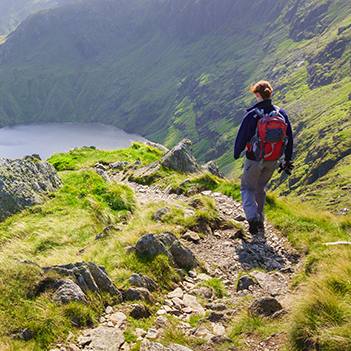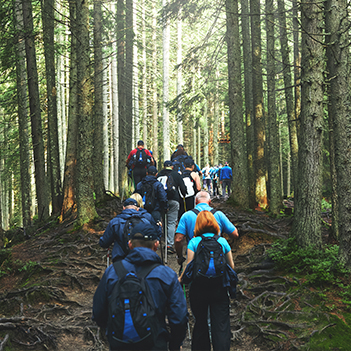A Linear walk with Jack Fuller along the 1066 rail line
Sat 19th Sep 2015
Walk Details:
Take the 09.15 from Charing Cross to Hastings, High Weald going through Burwash, past Rudyard Kipling’s House Batemans, then on via Brightling and some Fuller’s follies to lunch stop at the Swan Inn Dallington. Then further S through more of the High Weald, eventually some of the 1066 path to end at Battle Abbey
Entry Details:
Walk Report
A Linear Walk with Jack Fuller along the 1066 Rail Line, Saturday 19th September 201511 walkers, 19 miles - leader Jane Bates
Two reports!
1) Jane Bates (walk leader):
After awful weather last week we had a perfect warm September day. One of those days where sun is strong but air still has a fresh edge, being that bit later in the year the light is warmer and lower giving interesting shadows.
Timing went perfectly. Started well with no engineering works, a good pace throughout the day meant that we arrived at pub just before 2 and just got back in time for the 18.07 train from Battle, an hour earlier than I had feared/planned.
The key feature of the walk was the hills. I overheard someone saying 'oh no we are going downhill, that means we have to go up'. We certainly got the character of walking in the Weald, if you are not going down you are going up- there is no flat walking.
The walk started straight into the fields from the back of stonegate station, then a fairly easy start over the rare flat fields before the first climb to Burwash ridge and the old brick pavements of old Burwash. Here we had the first glimpse of our first folly, The Obelisk or Brightling Needle, that is a landmark on the next high ridge. Then down hill to go past Rudyard Kipling's house Batemans before the next climb, descent and climb through woods to near the gypsum mine. Here we had a mid-morning stop to admire the view before a steep descent and long climb up through more woods to Brightling. Then we toured the follies, the Pyramid in Brightling church where mad Jack Fuller is buried reputedly sitting at a table with his accustomed large meal. Then off to the Tower where jack fuller reviewed the work being done on Bodiam Castle, then across Brightling park near the Temple where he entertained young ladies to the Sugar loaf, built so that he could win a bet that he could see Dallington church from his house. He could not see it so had this little house built to win the bet.
Then a few hundred yards later we were at the swan at woods corner for a welcome stop in their sunny garden. Picnic lunches were taken at some convenient picnic benches at cricket ground/radio ham site near the sugar loaf.
Afternoon was a different character with more expansive views, minor roads and tracks mainly, with some great views back to Brightling needle. Still some hills though, the lung busting ascent of Tent hill being the worst but at the top we were rewarded with views to the South Downs, then down again and on 1066 path until final ascent of the hill into Battle.
2) Paul Lawrence (participant)
Ingeniously linking several follies by John 'Mad Jack' Fuller in rural Sussex, with distant views to others, on a pleasant and dry early autumn day after recent rains. A colourful character, John Fuller was born in 1750 and became squire of Brightling on inheriting family estates that included slave plantations - he was an outspoken supporter - and he is buried in Brightling churchyard. He was a builder of follies, as well as an MP along with several other Fullers. One folly passed, the Sugar Loaf or Fuller's Point, was built to win a bet that the spire of Dallington church could be seen from the Fuller home, which it could not, but the folly that looked like it could. This folly, remarkably, was lived in as a two-storey dwelling. (Sugar was sold in the form of a conical 'sugar loaf' in the 1820s, hence the name of several hills and mountains worldwide.) A noted drunkard, an incident in Parliament with the Speaker led to Fuller's disgrace, but he was a philanthropist and supporter of the sciences as a benefactor to the Royal Institution and established the Fullerian Professorship of Chemistry, a chair first occupied by the young Michael Faraday whom Fuller supported. Fuller purchased Bodiam Castle to save it from destruction. The final stages of the walk followed the 1066 Country Walk into Battle to pass the Abbey.
Photographs by Paul Lawrence
Other Files
Download Walk ReportGallery
Maps:
You can use the interactive controls to zoom in and out and to move around the map, or click on a marker for more info. (interactive map help)
© OpenStreetMap contributors under Open Database Licence.
Rights of way data from selected Local Authorities.
Large scale digital mapping is provided by John Thorn.






